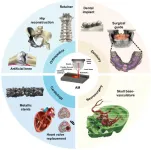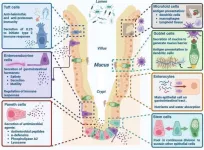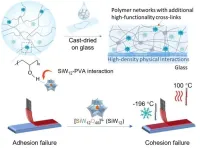Biomedical metal implant materials are widely used in clinical applications, including dental implants, hip replacement, bone plates, and screws. However, traditional manufacturing processes face limitations in meeting customized medical needs, internal structural control, and efficient material utilization. For example, when producing complex-shaped titanium alloy parts using conventional methods, the material consumption ratio is as high as 10:1-20:1, leading to significant material waste.
As a result, finding effective solutions to address these limitations—especially in producing customized biomedical implants and minimizing material waste—has been gaining increasing attention.
Published in the International Journal of Extreme Manufacturing, researchers from Xi'an University, Shanghai University, Shanghai Jiao Tong University, and Edith Cowan University provide a comprehensive examination of the most recent developments in additive manufacturing (AM) technology for biomedical metals.
This review summarizes the application of AM technology in the production of medical implants, analyzing the AM process, microstructure, mechanical properties, and corrosion behavior of titanium alloys, stainless steel, cobalt-chromium alloys and biodegradable alloys. Additionally, the article explores the integration of 4D printing technology and artificial intelligence in AM, along with its practical applications in clinical fields such as orthopedics, dentistry, cardiovascular medicine, and neurosurgery. It also highlights the challenges AM faced in the production of medical metal implants and outlines potential future development directions.
In the medical field, AM technology can design and manufacture implants that are highly customized to match the specific conditions of the patient's bones, enabling truly personalized medical devices. AM not only improves the biocompatibility of implants by precisely controlling their internal porous structure but also effectively reduces the stress shielding effect caused by material modulus mismatch, promoting the growth and repair of bone tissue.
Several AM techniques applicable to medical metals are introduced in this paper, including powder bed fusion-laser beam (PBF-LB) and electron beam powder bed fusion (EB-PBF), selective laser sintering (SLS), and directed energy deposition (DED). The advantages and disadvantages of these AM technologies are evaluated, with the appropriate technology selected based on application requirements such as implant characteristics, mechanical properties, production efficiency, and equipment cost.
In addition, the application of artificial intelligence in this field is discussed, highlighting its role in optimizing the manufacturing process. The importance of post-processing techniques, such as heat treatment and surface modification, is also emphasized to improve implant performance and ensure that the implants meet medical standards.
The article also provides a detailed overview of a range of materials currently used in medical applications, including but not limited to titanium alloys, stainless steel, cobalt-chromium alloys, biodegradable magnesium alloys, zinc alloys, iron alloys, new liquid metals, etc. Each material has its unique properties and characteristics, which are analyzed individually in the article. The appropriate material system can be selected based on specific needs and application scenarios.
Moreover, the potential of 4D printing is explored, which not only inherits the flexibility of 3D printing in terms of shape and structure, but also introduces changes in other dimensions. This technology enables materials to respond to external stimuli, allowing for self-deformation and functional adaptation. The introduction of gallium-based liquid metals offers new possibilities in the development of smart materials, facilitating the creation of reconfigurable and adaptive devices and products.
Despite the potential of AM technologies, it is important to recognize the barriers that AM technologies face, including cost considerations, regulatory compliance, and post-processing. Specifically, cost issues arise from the large initial investments required for 3D printing equipment and high-quality metal powders, as well as for mass-production. However, it is anticipated that economies of scale and industry competition will help alleviate these concerns as the technology matures.
Furthermore, medical devices must strictly adhere to the requirements of relevant national regulatory authorities. The lengthy process of obtaining medical device licenses presents a significant time challenge. Additionally, post-processing can affect delivery times and should be carefully considered. Overcoming these obstacles is critical for the successful application of AM in biomedical materials, which will require the collaborative efforts of industry stakeholders, researchers, and regulators. As these challenges are addressed, the integration of AM into healthcare becomes increasingly feasible.
Looking ahead, Prof. Zhang said: “Research and development of additively manufactured medical devices herald a promising future where personalized, high-performance medical implants are expected to become more accessible, cost-effective, and compliant with regulatory requirements, ultimately improving treatment outcomes and patient well-being.”
About IJEM:
International Journal of Extreme Manufacturing (IF: 16.1, consecutive 1st in the Engineering, Manufacturing category) is a multidisciplinary and double-anonymous peer-reviewed journal uniquely publishing original articles and reviews of the highest quality and impact in the areas related to extreme manufacturing, ranging from fundamentals to process, measurement, and systems, as well as materials, structures, and devices with extreme functionalities.
Visit our webpage, Like us on Facebook, and follow us on Twitter and LinkedIn.
END





